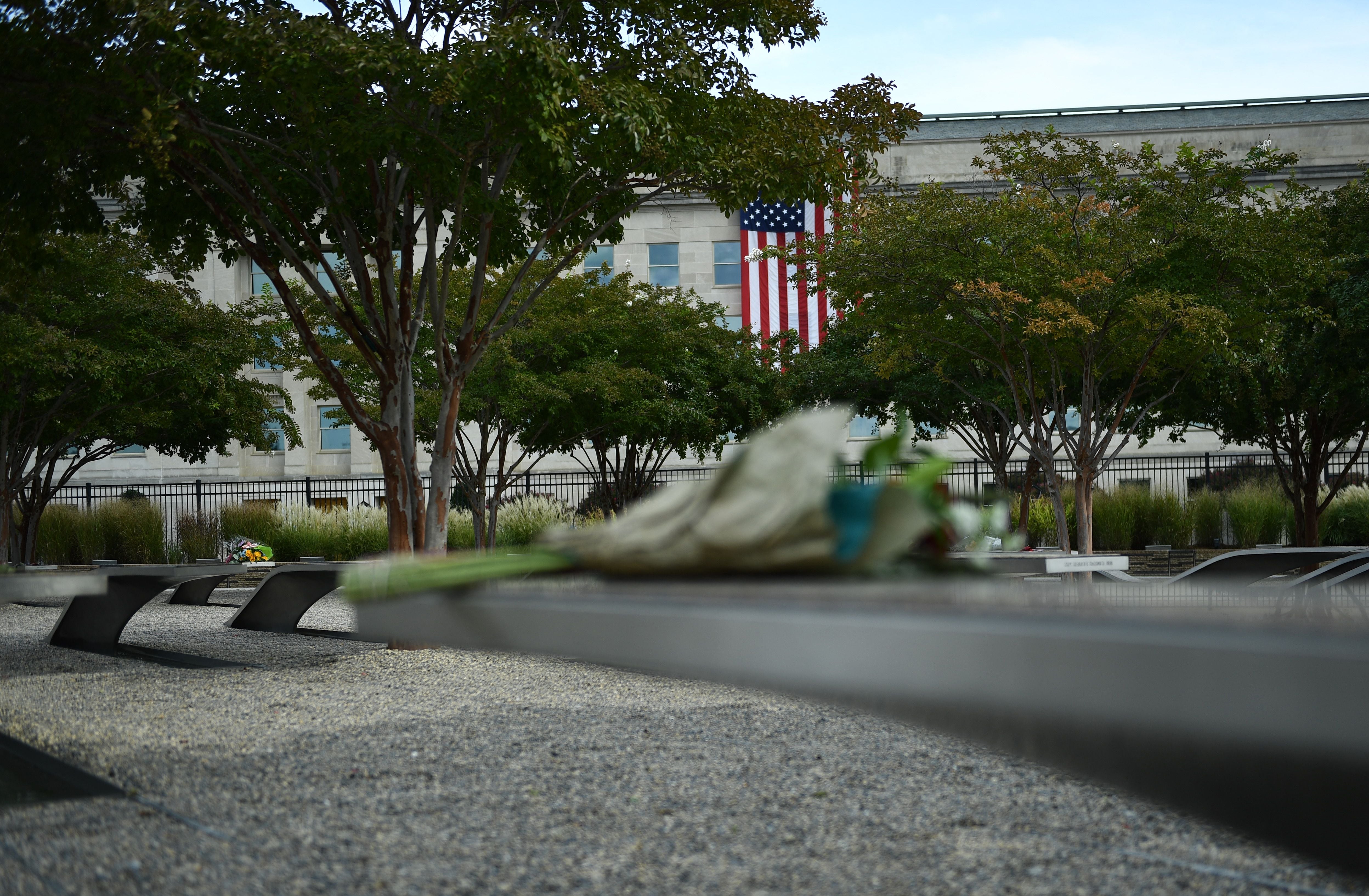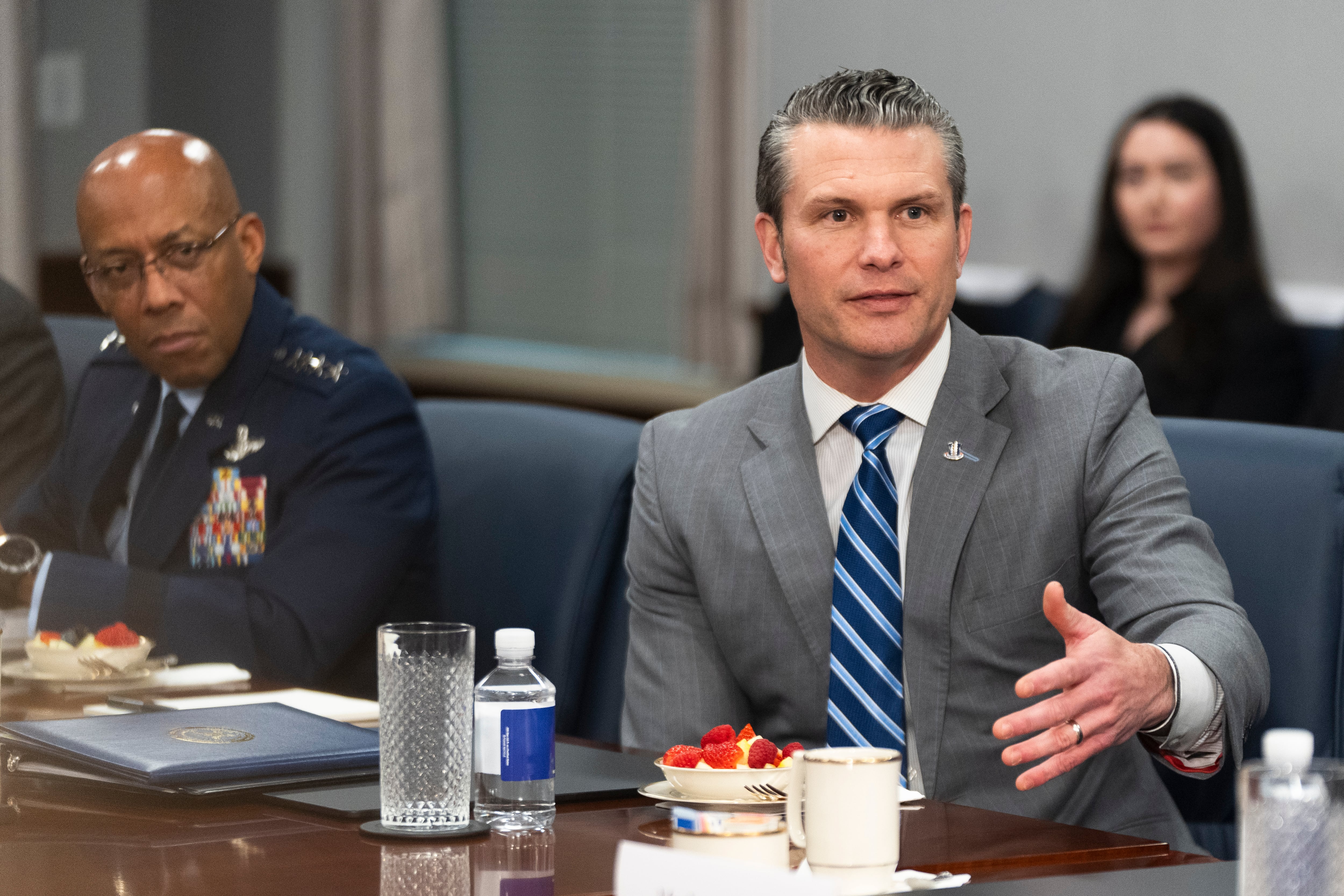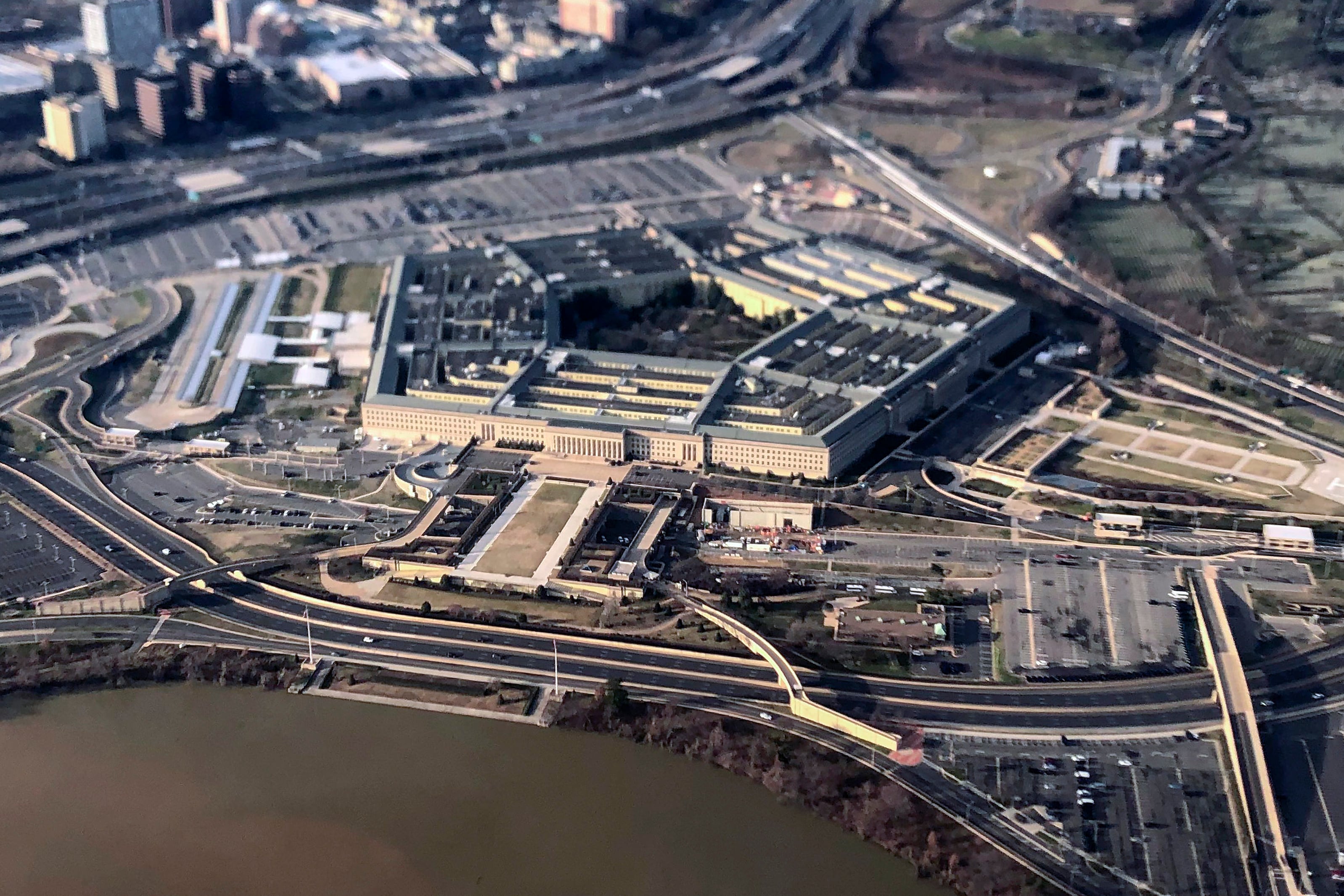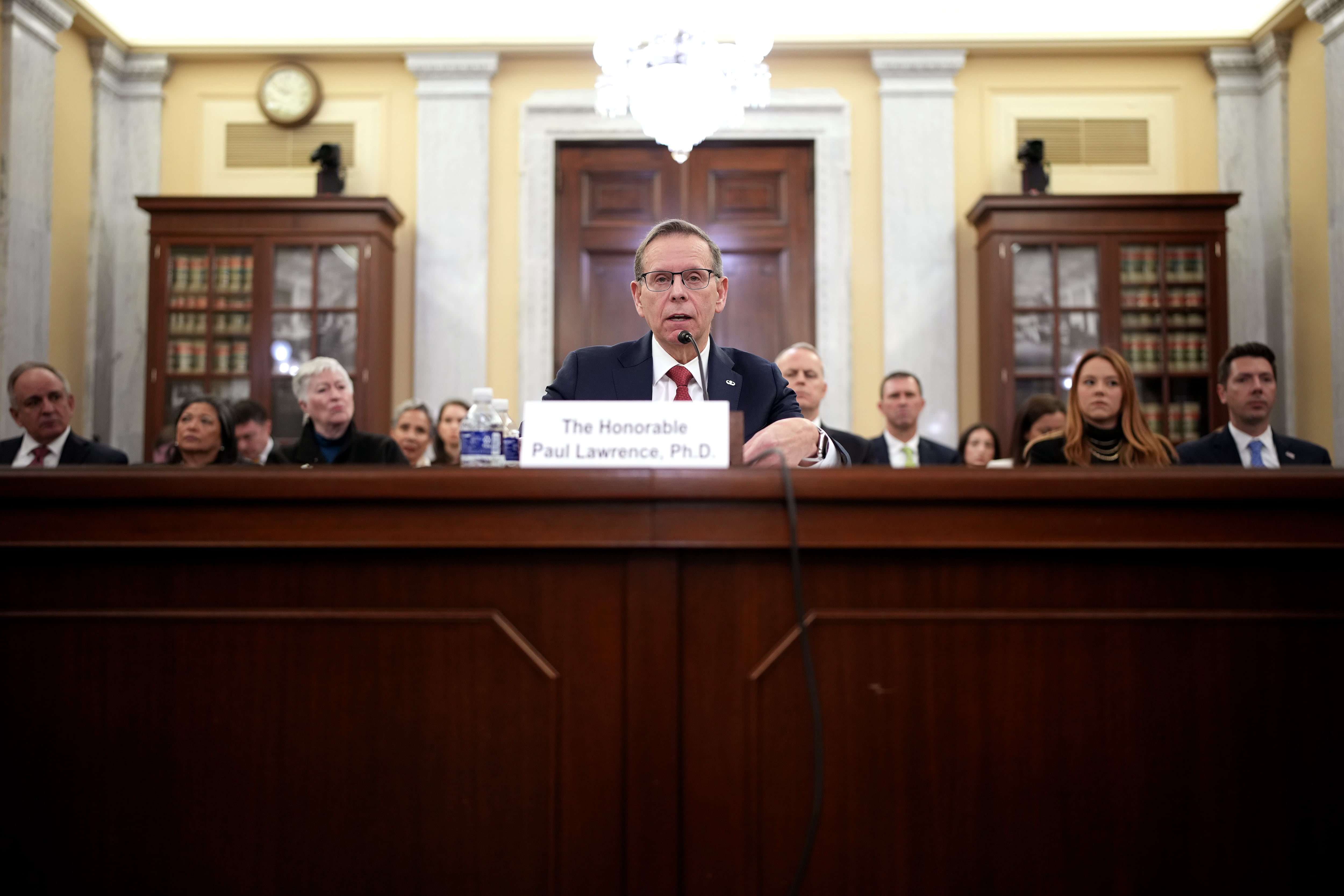GILLETTE, Wyo. — Dr. Sara Hartsaw still struggles to process what she saw in April.
Since joining the U.S. Navy Reserve in 2013, her more than 25 years of medical expertise as a general surgeon has been tested overseas in time of war and now on American soil during the first wave of the COVID-19 pandemic.
“It was just so bizarre, and it’s still bizarre in ways I can’t even describe,” said the Gillette surgeon. “I can describe Afghanistan, that was relatable. This was just not relatable.”
In the beginning of April, the Javits Convention Center in New York City was transformed into a temporary field hospital for the treatment of COVID-19 patients, many of whom flooded and overloaded the city’s hospital systems throughout the peak of the pandemic.
That’s when Hartsaw stepped in. The Navy mobilized her April 3 and days later she was in New York getting briefed on what was then an indefinite deployment, the Gillette News Record reports.
Each morning for almost a month, she would wake up in her hotel room, manage the 5 a.m. walk through the barren streets of Manhattan dressed in fatigues and suit up for another battle against the novel coronavirus.
The inside of the Javits Center field hospital took on a cold, industrial aesthetic, she said. Blocks of patient rooms were arranged throughout the inpatient section, where Hartsaw worked. An ICU, located separately, was built to house the more severe cases.
Generators hummed loudly as military personnel shouted muffled words to one another through face masks further obstructed by plastic face shields. The overhead lights never shut off.
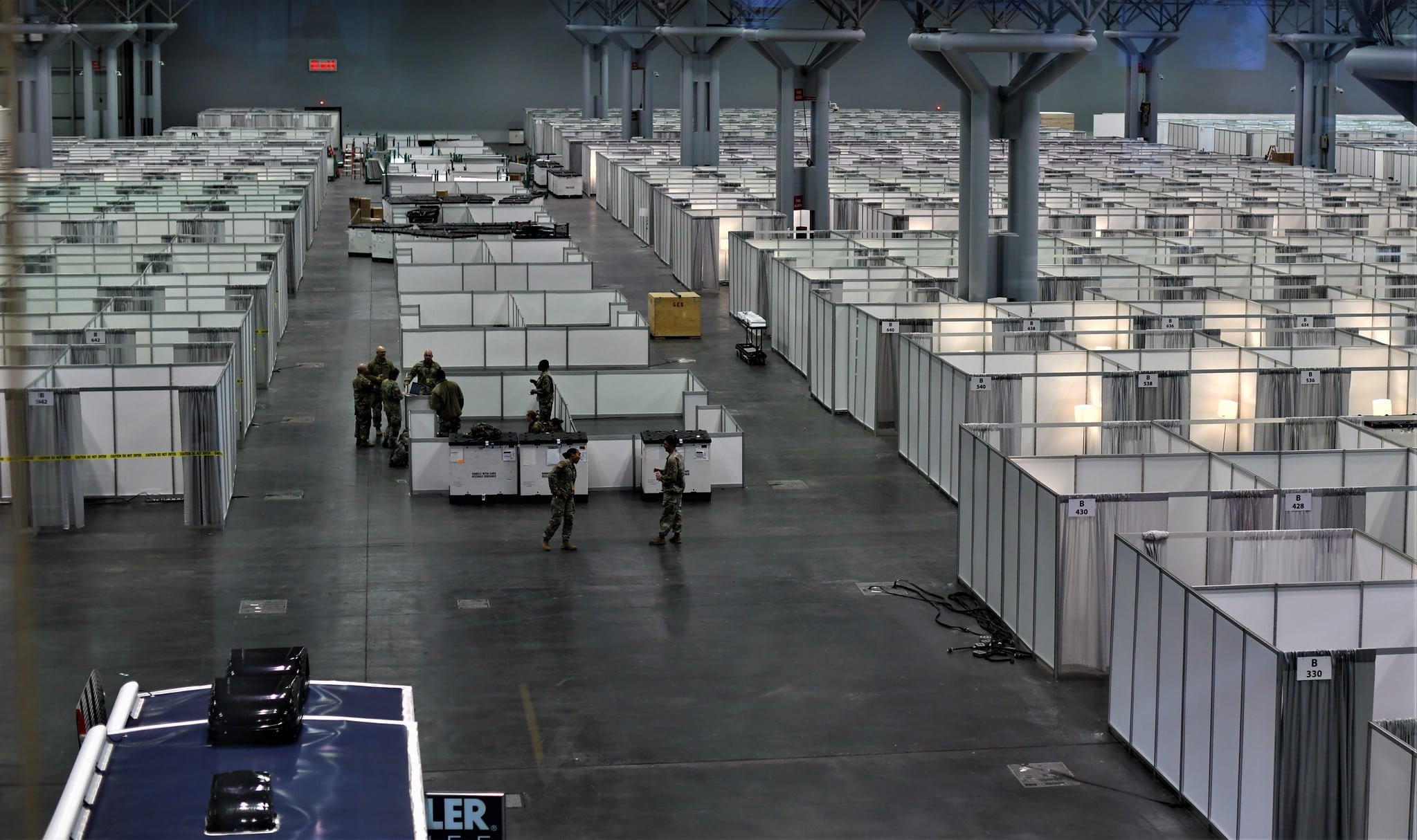
Patients stayed in cubicle rooms consisting of a hospital cot, one metal folding chair and a floor lamp rendered mostly useless by the constant brightness throughout the convention center. They were logged electronically upon arrival, she said, but paper charts and records were mostly used.
“‘Blade Runner’ is what it reminded me of, even though it wasn’t raining,” she said, referencing the classic 1982 sci-fi film set in an overcrowded future. “It was just like being in a movie. You just never knew how much weirder it could get, but you knew it probably could.”
In New York, she lived in a bubble that included the hotel she stayed in and the convention center she worked in, a makeshift military barracks and hospital respectively.
The walk between the two each morning and afternoon solidified how odd her life had become.
“A city of millions of people and no one’s out,” she said. “Even when it was kind of more normal, it was terribly abnormal. There just weren’t any people.”
RELATED
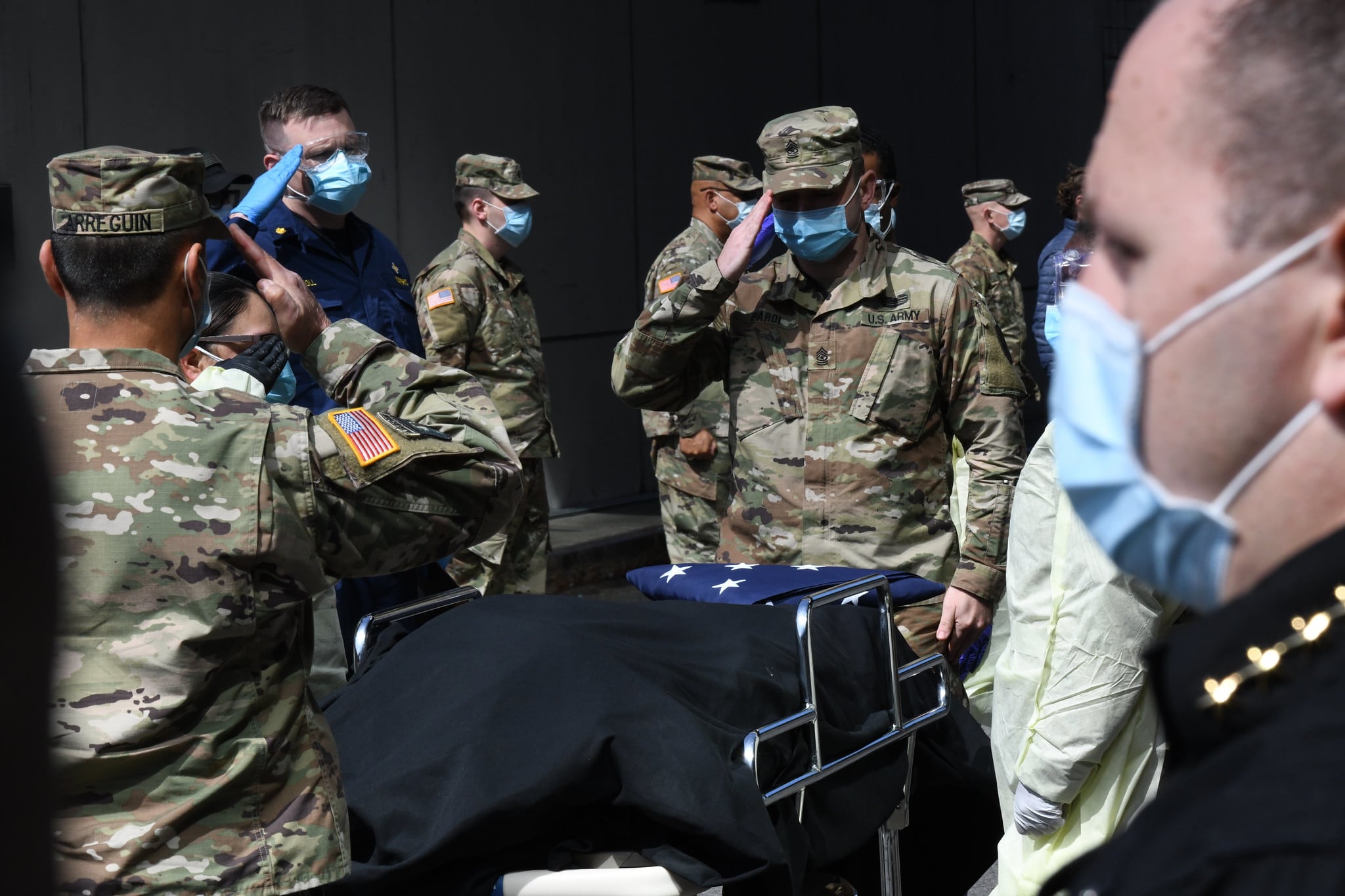
N95 respirators, surgical masks, protective eyewear, gloves and medical scrubs with a disposable gown worn on top became her uniform. She didn’t have a proper name tag, but a strip of beige tape across her chest that read her name in black marker: “Commander Sara Hartsaw, MD.” Another stretch of tape read “Team Bravo Leader.”
During her time there, Hartsaw oversaw a morning shift team of five, including herself. They worked most days from 6 a.m. to 2 p.m. At one point, her team had 104 patients under its care.
“The flood gates opened and we started taking care of people,” she said.
Hartsaw led her own team, but she also was in charge of managing the rest of the inpatient side, a tall order that gave her responsibility for the scheduling and overseeing of about 95 people divided into multiple teams.
“I have no idea why they picked me, but they did,” she said.
At that time, New York was quickly becoming the epicenter of the pandemic in the United States.
Detached from the rest of the city, the steady presence of ambulances dropping patients off from hospitals all throughout the five boroughs was one of the only connections to the outside world those deployed to the city had.
She likened the Javits Center field hospital to a halfway house. Patients came there from other hospitals when they were more or less on the mend to clear room for new COVID-19 patients. They were too sick to go home but, for the most part, they had recovered enough to leave the hospital.
Soon they were scrambling to clear patients from the Javits Center, too, as the overflow venue came close to overflowing itself.
“We were trying to get people out as soon as we could because we had no idea how many more people were coming,” she said.
The patients who did arrive had eclectic ties to different parts of the city and the world. Romanian, Korean and Creole were just some of the languages spoken by patients there, making communication difficult for some.
With their own phones, which were kept in plastic sandwich bags they stocked up on from Target, Hartsaw and her team called a “language line” that they could access for translation services. Their gloves and the baggies surrounding their phones added several layers atop the smartphones’ touch screens. When making calls, they had to slide the phone through the bag’s zip closure to hear and be heard on the calls, she said.
Between the phone service and the large number of multilingual people on site, they found ways to bridge communication gaps and effectively treat patients.
“You’re from Kansas, how do you speak Mandarin?” Hartsaw wondered aloud about some of the people she worked with. “These people have wonderful talents.”
The newness of the situation brought about challenges and innovations to overcome them. However, the novelty of the situation did not offset its reality for Hartsaw.
By her second day working in New York, she felt the imminence of the virus.
“Why do we even bother putting all this stuff on?” she remembered thinking about the layers of personal protective equipment weighing her down at the time. “We are all going to have this (virus). … We should just get over it and do our jobs better by being able to be a human to this person who doesn’t have to wear all this stuff.”
At the time Hartsaw reached New York City, its hospital system was pushed to the limit. Equipment shortages and requests for more were widespread. Case counts were escalating and most models projected unfathomable numbers of more infections and deaths to come in New York and across the United States.
Dread lingered. The surreal nature of the situation persisted.
“We didn’t talk about it much,” she said. “It was kind of fatalist.”
Fortunately, the Javits Center Hospital never reached capacity.
The field hospital saw 1,094 patients in its brief existence, Hartsaw said during a recent Campbell County Health board meeting, on which she’s a trustee. During that month, only six patients died there. At one point, it was the fifth largest hospital in New York City.
As the days in April passed, the local hospital system caught up and became able to handle the number of patients in the city without military support.
“I know people who were at the hospitals and it was absolutely as bad as it sounded like it was,” she said. “People in the hallways. No space and converting space to temporary ICUs. It was the real deal there.”
In early April, New York City hit a daily high of new hospitalizations with 1,722 and new confirmed cases with 6,378, NYC Health data shows. Additionally, the city also set a daily record with 597 deaths another day that week.
By the end of the month, those numbers began to drop significantly. On the last day of April, there were 2,020 new confirmed cases. A large number, but less than a third of the daily record set just weeks earlier. The new case counts in New York City have not risen above 2,000 in a day since, according to NYC Health data.
“I expected to be there for two or three months,” Hartsaw said. “It became more clear in late April, when our incoming numbers started to taper off and the number of discharges was picking up, that it was beginning to look like this wasn’t going to last forever.”
The last patient left the Javits Center on May 1, Hartsaw said. But for her, the ordeal had not ended.
Normalcy remained out of reach.
A series of negative COVID-19 test results were needed for her and the other military personnel to be cleared to travel. She took her first test May 4. Somehow, that batch of tests was contaminated, adding further delay to her return home.
Of the roughly 450 Navy personnel sent to New York, “six or seven” tested positive for COVID-19. Only one of those showed any symptoms, which weren’t severe, Hartsaw said.
Finally on May 10, she was cleared to leave New York, at which point she boarded a flight alongside other military personnel for San Diego, where they underwent a proper 14-day quarantine.
For as much time as she spent on the front lines, Hartsaw also spent a fair share of time isolated in hotel rooms.
“It was two weeks you never get back,” she said.
Restaurants were still open for takeout in New York, so she got to try several of the local flavors. Mexican, Thai, Vietnamese and Italian restaurants, as well as a nearby walk-up burger stand, broke up the monotony of her hotel-to-field hospital-and-back routine.
In keeping in touch with her Wyoming roots, she even used some of her down time to finish watching the Netflix series “Longmire.”
Food and television helped pass the time and keep her sane. Hartsaw said she even got a haircut when the military arranged for barbers to cut hair in her hotel one day. But her favorite quarantine pastime was one that directly connected her to some of the people she missed most.
While she was confined to her hotel rooms in both New York and San Diego, her daughters found a way to bring their family together from the other side of the world.
One daughter lives in Germany. Another lives in Minneapolis. The youngest is still in Gillette.
Yet, the four of them could still play cards together in Hartsaw’s off hours. Using a phone application, the four played together as they chatted and laughed away hours on a group call.
“Two continents, four time zones and we were playing ‘Uno’ online,” she said.
For those hours, they were not separated by thousands of miles, but together. Almost like family game nights at the kitchen table, before the pandemic made that impossible. For those moments, the outside world and the coronavirus was in the background.
They talked and smiled and lived. Scattered across the world, but together.
Months later and almost 2,000 miles away in Gillette, Hartsaw sifts through the thoughts of her deployment to New York with disbelief. As unbelievable as it was for her at times, the memories are validation. The number of deaths and hospitalizations tell a story of how chaotic New York was during the height of the pandemic.
It happened. She was there.
“The system there needed the help, they really needed it and I’m glad that we could do something to offload the pressure they were under,” Hartsaw said. “It really is the real deal, it’s not some made-up movie.”

